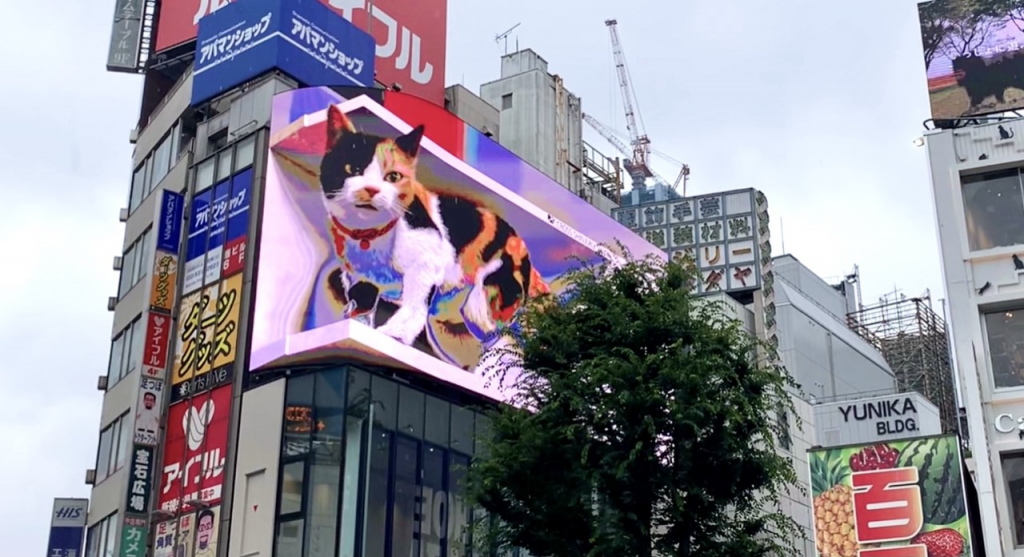
- ARAB NEWS
- 23 Apr 2024

Nader Sammouri
OSAKA: Tokyo, the land of neon lights isn’t fed up yet. Visionaries and creatives would assume that if things could be done better, bigger, and brighter, then why not? Realistic animations have been lately going viral on social media and spiking lots of interest. Massive 3D corner animation boards are sprawling not just in Tokyo, with its giant hyper-realistic cat, but also in cities such as Chengdu, Chongqing, New York, Kuala Lumpur and Dubai. With no eyewear required to witness the effect, passers are mesmerized, and their minds are blown away.
The Tokyo cat has certainly brought joy to its people amid the ceaseless pandemic. People gather in the hundreds around the corner of a Tokyo building near the famous Shinjuku station, one of Tokyo’s busiest spots, and try to record the meowing cat that is held in the 4k-resolution billboard. That cat watches over people, yawns, naps, and says “Nyannichiwa,” the Japanese cat’s version of the word “Konnichiwa” or “Hello” in Japanese.
The modern animation offers an illusion that makes it seem as if the main character is leaping out from the screen, though the corners of the seeming screen are parts of the animation itself. That illusion, in addition to the immense scale of the screen, makes the scene a landmark in itself.
“Animated ads, like the cat of Shinjuku, are some of the progressing advertising strategies of the future. I am working on one myself. I think 3D animations will be used for ads more and more. That is here to stay and will continue to thrive, and with so much free software and tutorials available online, I think 3D will only keep getting more popular. As real-time animation becomes more accessible with gaming engines, I think ads will follow that trend as well,” Ryota Suyama, a 3D animator and motion designer, told Arab News Japan.
Are people witnessing an evolution in marketing during this trend of rising 3D billboards, and how do 3D digital billboards even work?
3D technology generates a visual illusion, using digital techniques, to showcase something which the eye perceives as real although it is not real. The screen displays two diverse imageries that are recorded from two different angles, merging to produce a final footage that gives the realistically seeming delusion of depth in 3D. The ad then becomes an engaging and pleasurable visual experience rather than a dull image. At the same time, it allows brands the opportunity to leave a remarkable impression.
“How marketing will be used is going to shift depending on what’s trending. Like projection mapping though,” Suyama said. “It could just be a passing fad. Projection mapping and LED display mapping are just some of the ways 3D animations are mostly utilized for big advertisements. But I think software such as Unreal Engine and Unity are so readily available to do amazing 3D animations not just for video games, but for VR and AR in the near future. I think the future is more in virtual and augmented realities.”
People seem to need an aura of progress that surrounds them so that they can progress as well. The emergence of progressing technologies produces motion, not just on screens, but also in the people who surround them.